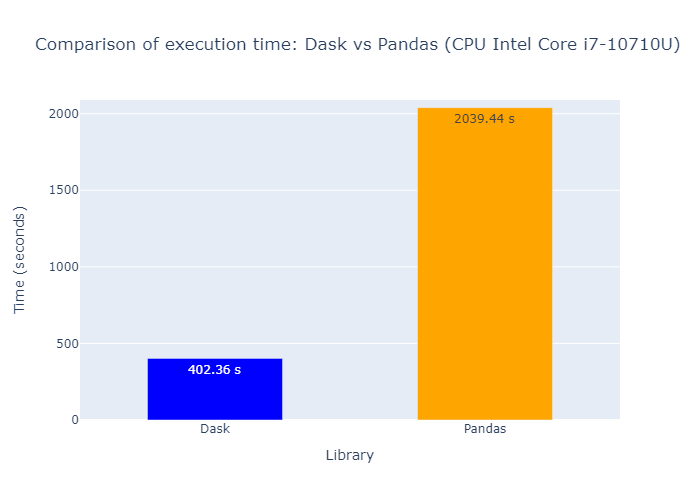Iraq War Logs Dataset data manipulation with Dask
Introduction
The main idea of this post is to filter, clean and prepare a portion of the Iraq War Logs Dataset in order to create a data visualization.
I wanted to create a new dichotomous variable to classify the attacks and incidents into two categories: those that happened at daylight and those that occurred at nighttime.
Using Pandas’ apply function would take forever, so I will use Dask’s multiprocessing apply instead.
Requeriments
- Filter by Indirect Fire, IED Explosions and Safire events.
- Convert coordinates from MGRS coordinates to Lat Lon with WGS84 Datum.
- Calculate Sunrise and Sunset local time from each event.
- Create a new binary column indicating if the events occurred between Sunrise and Sunset.
Libraries
Script
The cript has three main parts:
- Data filtering and formatting.
- Coordinates conversion.
- Sunset/Sunrise calculations.
Data preparation
Our subset of Iraq War Logs dataset will contain all the IDF, IED and Safire events where Coalition Forces or the Iraqi Security Forces were involved.
To properly manipulate the Datetime column, it will be converted to a Pandas datetime type, and we will map the Type of unit column to normalize the labels.
def dataframe_format(iraq_dataset):
"""
Data preprocessing. Filters the iraq_sigacts dataset by category (Indirect fire, IED and Safire) and by type of unit
(CF, Coalition Forces and ISF).
Converts Datetime column to datetime object with '%Y-%m-%d %H:%M' format and maps type of unit column to contain
only Coalition forces and Iraqi Security Forces.
Capitalizes Type, Category and Affiliation columns.
:param iraq_dataset: iraq_sigacts dataset
:return: Dataframe
"""
# Read dsv data
df = pd.read_csv(iraq_dataset).dropna()
# Filter by IDF, IED and Safire
df = df[df['Category'].str.contains('Indirect Fire|IED Explosion|Safire')]
# Filter by CF and ISF
df = df[df['Type_of_unit'].str.contains('CF|Coalition|Coalition Forces|ISF')]
# Datetime format
df['Datetime'] = pd.to_datetime(df['Datetime'])
# Type of unit name normalization
type_of_unit = {'CF': 'Coalition Forces',
'Coalition': 'Coalition Forces',
'ISF': 'Iraqi Security Forces'}
df[df.columns] = df.applymap(lambda x: x.strip() if isinstance(x, str) else x)
df["Type_of_unit"] = df['Type_of_unit'].map(type_of_unit).fillna(df['Type_of_unit'])
# Capitalize string columns
df[['Type', 'Category', 'Affiliation']] = df[['Type',
'Category',
'Affiliation']].apply(lambda x: x.str.capitalize())
return df
After the data filtering we get a dataframe with 44,464 rows.
Coordinates conversion
Converting from MGRS to WGS84 is crucial for interactive maps due to compatibility and usability. MGRS, used in military operations, is not widely supported in most mapping software, whereas WGS84 is the global standard for coordinates, universally recognized by major GIS and mapping platforms.
def mgrs_to_latlon(x):
"""
Converts MGRS coordinates to lat, lon format
:param x: MGRS coordinates
:return: Lat, Lon coordinates
"""
try:
# Initialize MGRS object
m = mgrs.MGRS()
latlon = m.toLatLon(x)
lat, lon = latlon
lat = str(lat).replace("(","")
lon = str(lon).replace(")","")
return float(lat), float(lon)
except Exception:
return np.nan, np.nan
Sunrise, sunset and daytime computations
We are computing sunset, sunrise, and daytime for specific locations and dates using Dask for parallel processing. The function sun calculates the local times for sunset and sunrise, as well as a binary daylight indicator, by leveraging ephemeris data to determine the sun’s position. Each row in the DataFrame, which includes latitude, longitude, and datetime columns, is processed row-wise in parallel using Dask.
This approach efficiently handles large datasets, enabling rapid computation of these solar events across many records simultaneously. The resulting times are adjusted to the local timezone, ensuring accurate and relevant data for each location.
def sun(df):
"""
Calculates the sunset and sunrise (local time) for a specific location (lat, lon) and a specific day.
Creates a dichotomous variable called daylight with 1 if the event occurred at daylight.
:param df: Dataframe that contains lat, lon and Datetime column.
:return:
sunset with format %Y-%m-%dT%H:%M:%S
sunrise with format %Y-%m-%dT%H:%M:%S
daylight dichotomous variable.
"""
try:
# Ephemeris bsp file to calculate the position of the sun at a specific location and date.
eph = api.load('de421.bsp')
ts = api.load.timescale()
# GeographicPosition object
location = api.wgs84.latlon(df['lat'], df['lon'])
# Two UTC timescale object to find sunsets sunrise in between
t0 = ts.utc(df['Datetime'].year, df['Datetime'].month, df['Datetime'].day, 0)
t1 = ts.utc(df['Datetime'].year, df['Datetime'].month, df['Datetime'].day, 23)
# Find all sunsets and sunrises at location between t0 and t1
t, y = almanac.find_discrete(t0, t1, almanac.sunrise_sunset(eph, location))
# Sunrise and sunset with UTC +3 (Iraq Offset)
sunrise = datetime.strptime(t.utc_iso()[0], '%Y-%m-%dT%H:%M:%SZ') + timedelta(hours=3)
sunset = datetime.strptime(t.utc_iso()[1], '%Y-%m-%dT%H:%M:%SZ') + timedelta(hours=3)
# Conditional if the event is at daylight ot not
if sunrise.time() < df['Datetime'].time() < sunset.time():
daylight = 1
return sunrise, sunset, daylight
else:
daylight = 0
return sunrise, sunset, daylight
except Exception:
return np.nan, np.nan, np.nan
Dask parallel compute vs Pandas apply
We are setting up a Dask client with 6 workers and splitting the dataset into 500 partitions for parallel processing. The sun function is applied row-wise to each partition, and the results are specified to include ‘Sunrise’ and ‘Sunset’ as datetime columns, and ‘Daylight’ as an integer column.
The computation is executed with Dask’s process-based scheduler, ensuring efficient parallel execution. After processing, the Dask client is shut down.
# Dask Client with 6 workers
client = Client(n_workers=6)
# Convert df to a Dask dataframe with 500 partitions
ddata = dd.from_pandas(df,
npartitions=500)
start_time = time.time()
print('Executing Dask with 6 workers and 12 threads')
with ProgressBar():
# Apply sun function with dask parallel processing and compute the dask object to get a pandas df.
df[['Sunrise', 'Sunset', 'Daylight']] = ddata.apply(f.sun,
axis=1,
result_type="expand",
meta={0: 'datetime64[ns]',
1: 'datetime64[ns]',
2: 'int64'}).compute(scheduler='processes')
client.shutdown()

Performance comparison
To compare the performance of the two approaches, we measure the time taken to compute the sunrise, sunset, and daylight columns for the “War Diary: Iraq War Logs” dataset, which contains 44,464 entries. Using an Intel Core i7-10710U CPU with 6 cores, it took:
- Dask multiprocess time: 402.36 seconds
- Pandas apply time: 2039.44 seconds

About me
My name is Martin, and I am a Data Scientist.
Repository link on Github

 Except where otherwise noted, this blog's content is licensed under a
Creative Commons Attribution-NonCommercial-ShareAlike 4.0 International License.
Except where otherwise noted, this blog's content is licensed under a
Creative Commons Attribution-NonCommercial-ShareAlike 4.0 International License.